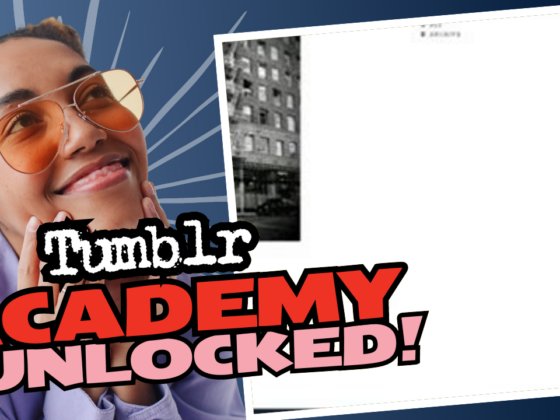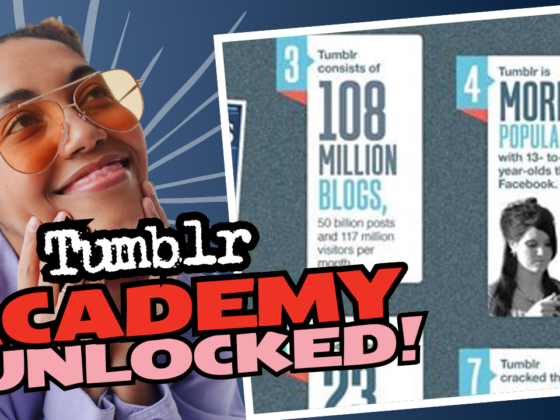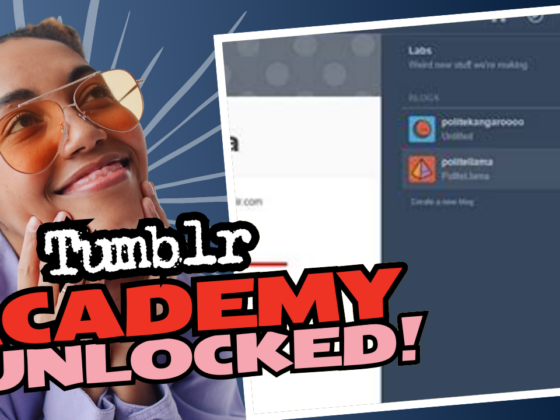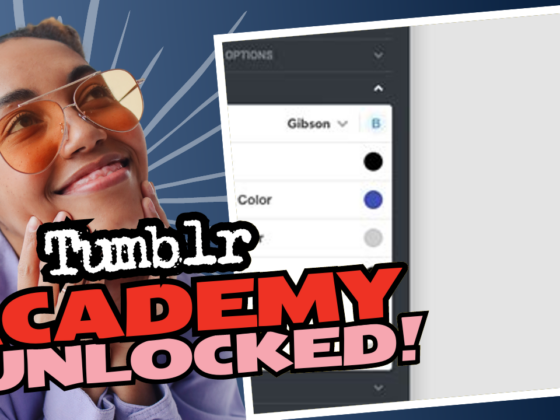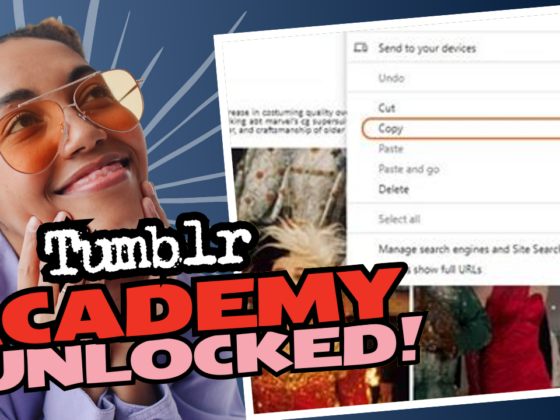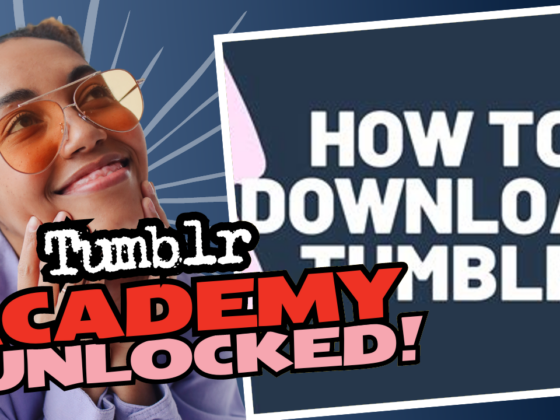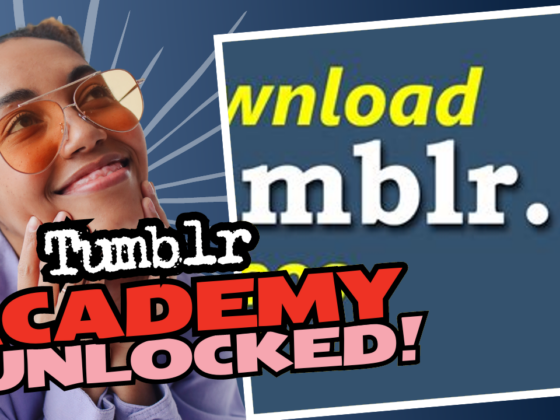Can a Tumblr Account Lead to Spam? Let’s Dive In!
Ah, Tumblr. A world filled with memes, artistry, and the occasional existential crisis. But what do we see creeping in like an unwelcome house guest at 2 AM? Bots! Yep, the infamous spam accounts that follow you for reasons that are still unclear to the human race. But fret not, dear Tumblr enthusiast; we’re here to shine a light on this perplexing issue. So grab your favorite snack and let’s unpack this anomaly together!
What Do These Bots Accomplish?
You have to hand it to the bots; they’ve got a hustle going on that would make even the most seasoned internet marketer nod in approval. But the question remains: what is their end game?
- Data Harvesting: One of the most notorious tricks in the bot playbook is harvesting data. Many of these bots follow real accounts hoping to gather information on their preferences and behaviors. This data can later be sold to third parties or used for targeted marketing campaigns. Creepy, right? It’s like that one friend who keeps asking where you got your shoes because they want to snag a pair for themselves. Only this “friend” can be anyone on the internet!
- Engagement Generation: Some bots aim to generate engagement on their generic accounts. By following lots of people, they hope to receive follows back. Once they build a follower base, they can spam their “fans” with irrelevant messages promoting their “services” or links to meme-worthy sites—like a digital yard sale, minus the yard and any actual sales. They’re essentially trying to create a community of their own through sheer force (or rather, sheer fraud).
- Malware Distribution: Some bots harbor more malicious intent. They might look innocent, but behind that adorable username lurks links that could infect your device with malware or redirect you to phishing sites. “Oh, but it’s just a cute profile picture!” you might be thinking. Spoiler alert—it’s a trap! Kind of like how those clickbait articles draw you in with promises of revealing your true age based only on your choice of a sandwich!
Do They Pick Particular Blogs Based on Something?
Excellent question! It would be nice to think there’s a sophisticated matchmaking process behind bot accounts, as if they have their own secret Tinder for choosing victims. But alas, it may not be that dramatic (or witty).
Algorithmic Targeting
- Keywords and Activity Levels: Many bots utilize algorithms that scan through various blogs for specific keywords. If your blog features popular terms or themes (like ‘adult models’ or ‘sassy memes’), you’re likely on their radar. They thrive on activity and popularity—much like that one friend who always ends up on the guest list at every party.
- Engagement Metrics: Blogs that engage more with their audience (like through comments or reblogs) might accidentally signal to bots that they are “worth following.” It’s like a popularity contest, but instead of high school kids vying for prom queen, you’re stuck with an army of faceless spam accounts.
- Profile Aesthetics: Believe it or not, the aesthetics of your profile may also attract these pesky bots. If you have a bubbly username or an eye-catching profile picture, you might just light the “Follow Me” beacon for every lurking bot in the vicinity. It’s like wearing a neon sign that says, “HELLO! I’m hugely popular and completely unperturbed by your lack of authenticity!”
Engagement vs. Spam: The Classic Dilemma
Ah, the slippery slope of striving for genuine interaction on Tumblr while dealing with the flood of egregious accounts trying to crash the party. It’s like inviting your friends over for a delightful dinner only for them to be joined by an uninvited horde of spam-loving bots. What’s the etiquette here? Do we just block everyone and eat our cake alone? Or can we straddle this fine line?
Genuine Interaction
- Prioritizing Authentic Followers: If you wish to maintain a genuine community, focus on creating meaningful content. Posts that resonate with real people organically draw in the right kind of crowd. Think about what would make your audience engage! Whether it’s thought-provoking questions or stunning visuals, keep your content alive and lively.
- Engage Actively: Don’t shy away from responding to comments or interacting with your followers. Bots can’t replicate a genuine conversation, so connecting with your audience will inevitably set you apart from the algorithms trying to infiltrate your space.
Dealing with Spam
- Blocking Bots: Yes, I know it feels like playing a never-ending game of Whack-a-Mole. But blocking those accounts you don’t know (especially if they have some wildly sketchy profile pic of a bikini-clad figure) can save you a lot of annoyance. Block, block, block! It’s your way of saying “no” to unsolicited spam. Take that, bots!
- Reporting: The report function is like a call to arms! You’re letting Tumblr know that spam accounts are plaguing the land. Each report helps flag these accounts for review and may prevent others from experiencing the same “joy” you have. Think of it as helping your fellow Tumblr comrades.
- Disable Notifications: If the constant notification dings from new followers make you feel like your phone is auditioning for a part in a horror movie, turn off those notifications! Go into your settings, find that magical toggle, and flip it. With notifications silenced, you can at least pretend the bots don’t exist… for now.
The Call for Action!
There’s a heartfelt wish shared by many Tumblr users, echoed through the comments section like a digital symphony: Tumblr, do something! Yes, please! The community longs for an overhaul or better policies to crack down on these bot nuisances. Imagine a Tumblr that celebrates authentic connections without the need for a bazillion spam accounts following you.
What Could Tumblr Do?
- Enhanced Reporting Tools: Improve the reporting interface! Simplifying the reporting process can encourage users to report spam more frequently. Maybe a button that screams “SPAAAM!” when pressed? That would definitely add a little fun to the proceedings!
- AI-Powered Detection: Invest in stronger algorithms that can recognize and flag bots before they make their way into real people’s feeds. I mean, if Amazon can recommend a casserole dish simply because I looked up “quick food hacks,” surely Tumblr can develop a spam detection feature, right?
- Stricter Account Verification: Implementing stricter verification processes for new accounts could reduce the influx of bots. A simple email verification process could go a long way in ensuring the profiles are run by actual humans.
- Community Involvement: Create a community-driven initiative where users can participate in training AI to recognize spam accounts. It’s like being a digital hero—who wouldn’t want to be the savior of their online community?
The Bottom Line?
While bots remain a quirky, nuisance-filled aspect of the Tumblr experience, YOU have the power to manage how they affect your time on the platform. Though you might feel like you’re actively dodging ninjas in a bizarre ‘bot-thwarting’ game, you can reclaim your Tumblr oasis.
With engaging content and a dash of clever blocking, you’ll start noticing those bots following your trail less and less. And who knows? Maybe one day we’ll wake up to a beautiful, bot-free Tumblr where only the good vibes and real connections flourish. Until then, embrace the chaos—with a snack in hand, of course, and try not to let the spam-tastic bots rain on your Tumblr parade!
So, dear reader, next time you get a notification from a suspicious account, remind yourself, “This is not the end; just a quest in my Tumblr journey!” Keep the faith, block those bots, and keep the good vibes rolling! Happy Tumbling!


